2013-2060
At some point during this period, the United States is struck by the most devastating earthquake in its history
The Cascadia Subduction Zone is a 600 mile-long converging plate boundary stretching from northern California to southern British Columbia. The fault causes a major earthquake about once every 300 years. Compared to other fault lines, this is an unusually long return time – resulting in greater stress build-up and stronger subsequent earthquakes. The last major event (a so-called megathrust quake) took place in 1700 and was estimated to have had a magnitude of at least 9.0.
Since then, the movement of the two plates has steadily built up pressure. In the first half of the 21st century, the fault exceeds the vast majority of previous time intervals in its recorded history.* During this time, the plates finally slip, resulting in the single most devastating earthquake in United States history.*** It is centred on the state of Oregon, with a duration of several minutes, inflicting deadly damage to major population centres such as Portland, Seattle, Olympia and even Vancouver and Victoria. Of course, many structures have been retrofitted and are able to withstand the earthquake, along with the majority of newer buildings. However, years of economic trouble, as well as a general inexperience with large earthquakes, have left many structures vulnerable.
Bridges and highways collapse, while the ground in the Seattle bay area liquefies, dragging buildings underwater. Broken gas mains and power lines spark numerous fires. The quake generates massive tsunamis,* which inundate coastal communities from California to Alaska. These giant waves are sent racing across the Pacific, causing damage as far away as Hawaii and Japan. Millions are left without power, while emergency responders struggle to adapt to the scale of the disaster. The death toll quickly reaches into the thousands, while the financial cost exceeds $100 billion. Along with the similarly devastating southern California earthquake, this disaster pushes much of the American west coast toward financial ruin.
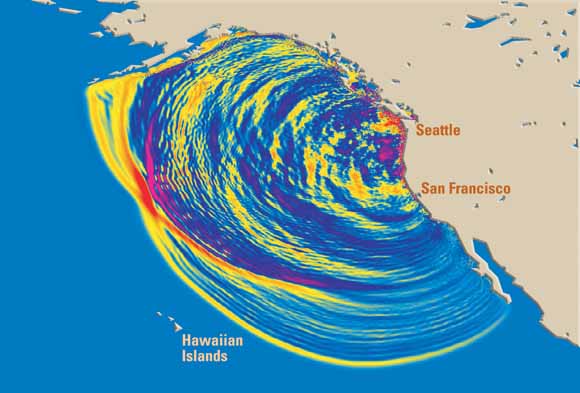
2013-2037
At some point during this period, a major earthquake hits California
Experts had been warning for years that it wasn't a matter of "if" – but "when" a major earthquake would strike the Los Angeles basin.* This particular quake is of sufficient magnitude to cause tens of billions of dollars' worth of economic damage, with much loss of human life. Thousands of buildings are destroyed and there is widespread damage to roads, bridges and other infrastructure. This disaster comes as California is already going through a financial crisis.
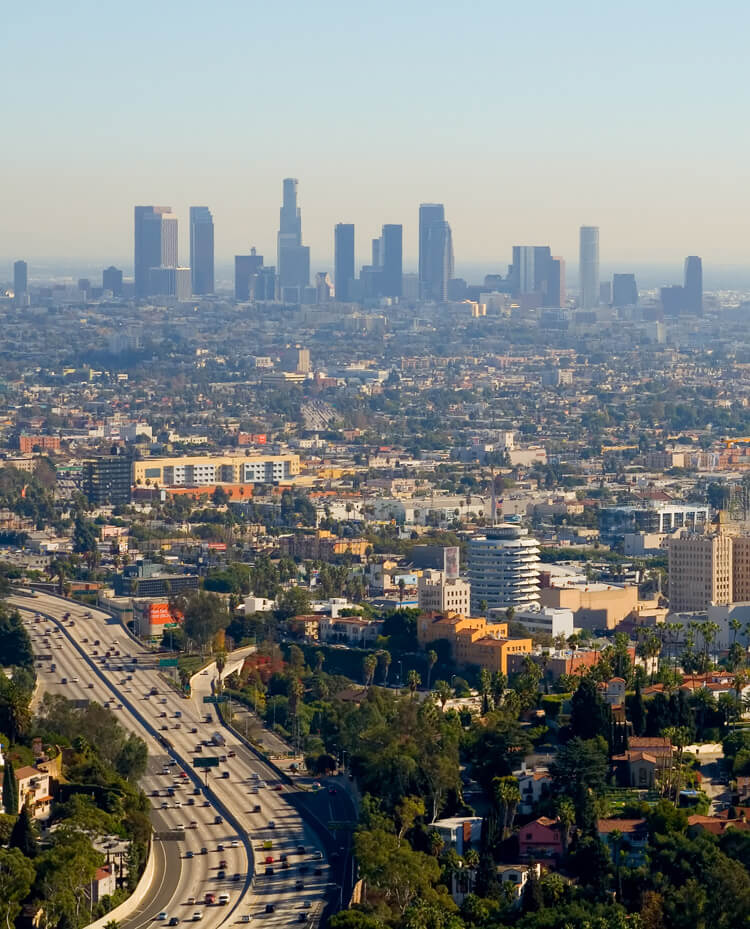
2013
Food prices are triggering civil unrest
World grain reserves are now at historically low levels, due to extreme weather events in the previous year. Failing harvests were particularly bad in the United States, Russia and Eastern Europe.** As the world consumes more than it can produce, the resulting increase in food costs is sparking riots and bringing down a number of governments in Africa and the Middle East.** In the poorest countries, between 60-80% of household budgets are spent on food.* Though less of a problem in the developed world, consumers nevertheless feel the impact.*Restaurants are taking some foods off the menu, while in supermarkets, the cost of bread and vegetables is becoming noticeably higher. This alarming trend worsens in the decades ahead, as millions face hunger. By 2030, it has become a major global crisis, with a doubling of prices for key staples including wheat and rice.*

Birth of a royal baby
Kate Middleton is the Duchess of Cambridge and wife of Prince William, the future King of England. In April 2011, their wedding was seen by hundreds of millions worldwide. In 2012, she was chosen by Time magazine as one of the 100 Most Influential People in the World. On 3rd December 2012, St James's Palace announced that the Duchess was pregnant and expecting her first child. The royal baby and heir to the throne is born in July 2013.*

China overtakes the USA in scientific research
In terms of scientific output, China had been closing the gap between it and the developed world for several years. Thousands of new research papers were being published each year at an accelerating rate, while millions more students were entering universities as the country became more developed. At the same time, the United States had seen a steep drop in its own scientific and technological research. In 2004, China passed the United Kingdom, becoming second in terms of academic studies. The gap finally closes in 2013, as even the USA falls behind China.*
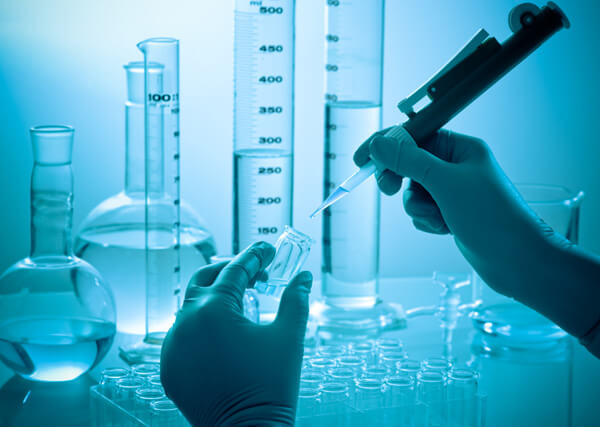
Solar flares are disrupting the Earth's magnetosphere
The Sun reaches its solar maximum this year - the period of greatest activity in its 11-year solar cycle. Because of the unusually low level of activity in recent years, this has caused a sudden build up of energy now, with large "solar storms" hitting Earth's magnetosphere. These are strong enough to disrupt electronic systems on the ground. Satellites, air travel, car navigations, the banking system, hospital equipment, computers and many other machines are affected during this period.*
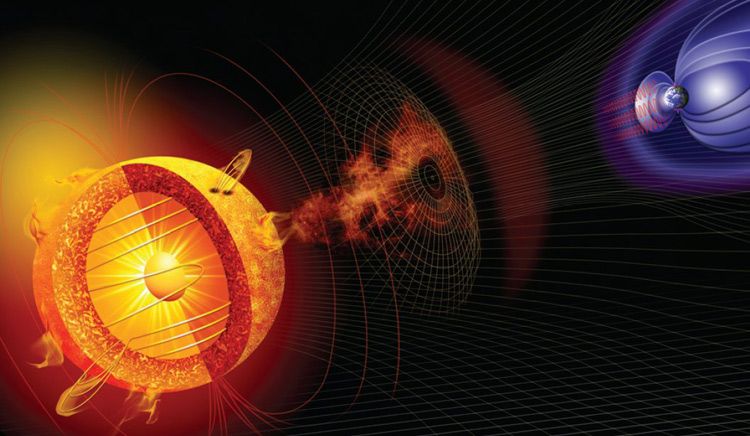
Credit: NASA
The Gaia mission is launched
While the naked human eye can see only a few thousand stars on a clear night, Gaia will map over a billion – approximately 1 percent of all stars within our own Milky Way galaxy – over the course of its five-year mission beginning in 2013. It will chart their brightness and spectral characteristics, as well as their positions and motions, forming a highly detailed three-dimensional map.*
Comet ISON makes an appearance
C/2012 S1 (ISON) is a sungrazing comet discovered in September 2012 by astronomers at the ISON-Kislovodsk Observatory in Russia. It reaches perihelion (closest approach to the Sun) on 28th November 2013 at a distance of just 680,000 miles (1,100,000 km) above the Sun's surface. Its orbit is nearly parabolic, suggesting that it may be a new comet coming fresh from the Oort cloud. Between November 2013 and January 2014, it is visible to the naked eye, briefly becoming brighter than the full Moon.*
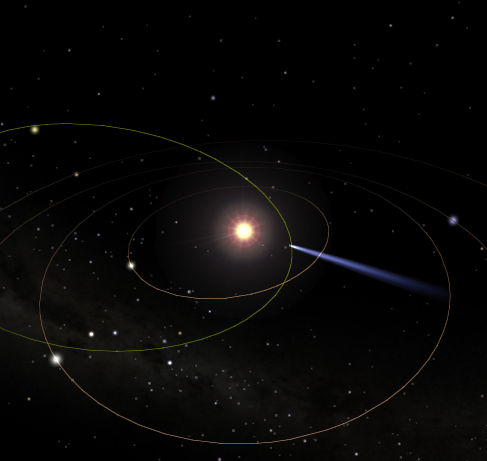
The first gene therapy in the Western world
Gene therapy is a new and emerging area of medicine that holds enormous potential. By identifying and "editing" faulty genes within a person's cells, every disease could in theory be overcome. Research into the field has been fraught with problems, however, with patients developing cancer and even dying in clinical trials.
China approved the first gene therapy in 2003. For the Western world, however, it would take another 10 years for this to happen. In 2012, Dutch company uniQure developed "Glybera", for lipoprotein lipase deficiency (LPLD) and recurring acute pancreatitis. Patients with LPLD – a very rare, inherited disease – are unable to metabolise the fat particles carried in their blood, which leads to inflammation of the pancreas (pancreatitis), an extremely serious, painful and potentially lethal condition.
Glybera was successful in human trials and received approval from the European Commission, with marketing authorisation covering all 27 EU member states. In 2013, it becomes commercially available.* uniQure applies for regulatory approval in other countries including the US and Canada.
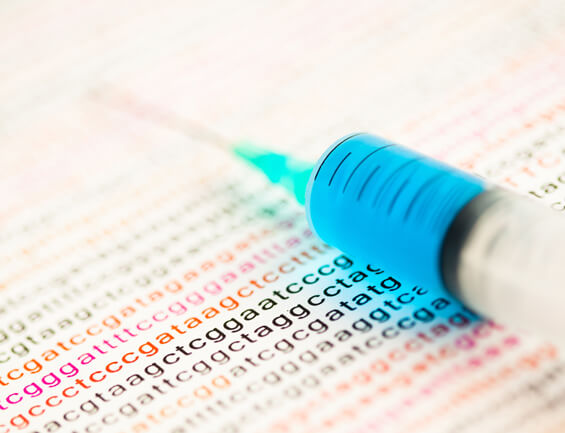
Highly flexible touch sensors are appearing in a range of gadgets
Highly flexible, film-based touch sensors are entering the smartphone and tablet markets.* They are also extending touch capabilities into a range of new consumer and industrial products. Using roll-to-roll metal mesh technology, they provide a high-performance alternative to existing touch sensors. Larger, lighter, sleeker, curved and edgeless designs can now be developed for handheld devices. Thinner sensor stacks with flawless touch performance, excellent optical clarity, low sheet resistance and low power consumption are enabling designers to turn unique, futuristic concepts into functional designs at lower total system costs compared to previous market alternatives.
Launch of the PS4 and Xbox 720
2012 saw the launch of Nintendo's Wii U – the first of the eighth generation games consoles.* By late 2013, it is joined by the PS4 and Xbox 720.* These new machines offer major improvements in graphical power. Both have eight-core CPUs, each clocked at 1.6GHz and based on the 28nm fabrication standard. Using the new "Jaguar" technology by AMD, this processor architecture gives optimal balance of power consumption and performance.
Codenamed "Orbis", the PS4 uses Radeon HD graphics hardware, with 18 compute units running at 800MHz.Handling screen resolutions of 4000 x 2000 pixels, as well as 3D gaming in full 1080p,* it has 4GB of ultra-fast GDDR5 memory with 512MB reserved for the OS.
Codenamed "Durango", the Xbox 720 features slower DDR3 RAM, but double the volume of the PS4, with 8GB including 3GB dedicated to the OS. It also has two cores reserved for customisable apps which can be run in parallel with gameplay.
Both consoles are much closer in design to gaming PCs than their predecessors, allowing stronger ports to the desktop computer format.*
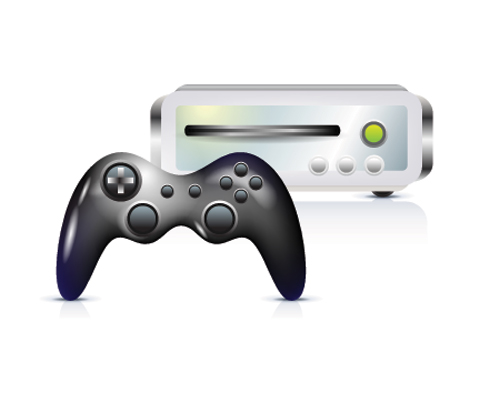
Direct high-speed rail from London to Frankfurt and Amsterdam
Two of Europe's biggest financial centres - London and Frankfurt - are now connected by a high-speed rail link. Trains running at 320 kph (200 mph) provide a journey time of under five hours. Combined with cheaper fares and better onboard web access, this offers a genuine alternative to air travel. The service also runs to Brussels, Cologne, Rotterdam and Amsterdam.*
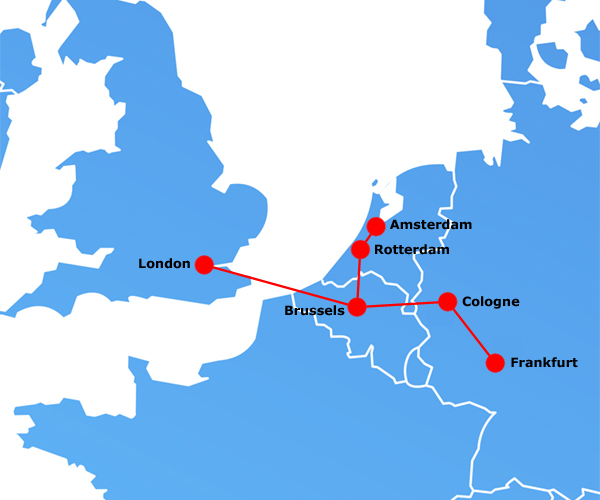
© Will Fox
Expansion of the Port of Rotterdam is completed, tripling its capacity
The Port of Rotterdam is the largest port in the Western Hemisphere, and one of the busiest in the world. Completed this year is the ambitious Maasvlakte 2, the largest land reclamation project in Europe and one of the single largest earth-moving projects in history. Approximately 2000 hectares are reclaimed. With its completion, container capacity is tripled - providing a significant boost to the Dutch economy.*
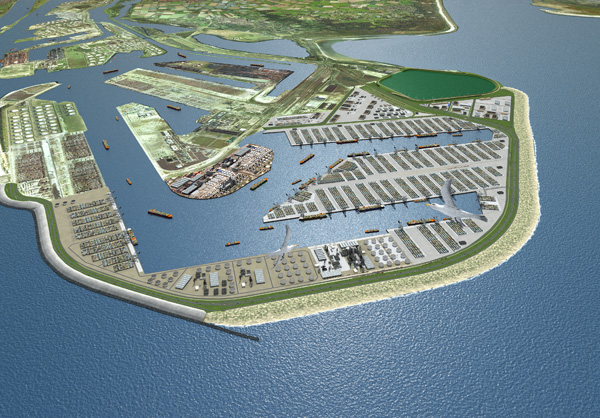
Credit: Havenbedrijf Rotterdam N.V., Projectorganisatie Maasvlakte 2.
14 nanometre chips enter mass production
The next generation of microprocessor technology is released by Intel, with transistors now based on a 14nm manufacturing process.* For comparison, a carbon atom is 0.34nm wide.* The 4GHz barrier in stock CPU is finally being passed, thanks to the performance and energy efficiency of these new chips.
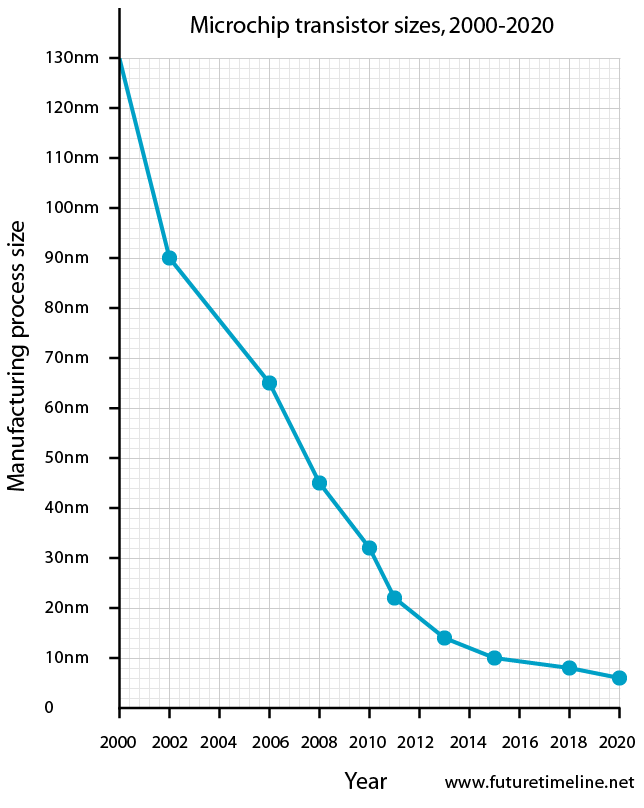
China's Tiangong-2 space station module is launched
Tiangong (translated as "Heavenly Palace") is a space program of the People's Republic of China, with the goal of creating a next generation space station. It begins with a "space laboratory phase" which consists of three separate modules for testing and experimental purposes – the first being launched in 2011, the second in 2013*and the third in 2015.
Tiangong-2, launched in 2013, is larger and more advanced than its predecessor, with improved docking abilities. All three of the Tiangong modules can support crews of three astronauts. They serve as a prelude to the larger and more advanced space station that begins to take shape from 2020 and is fully operational by 2022.
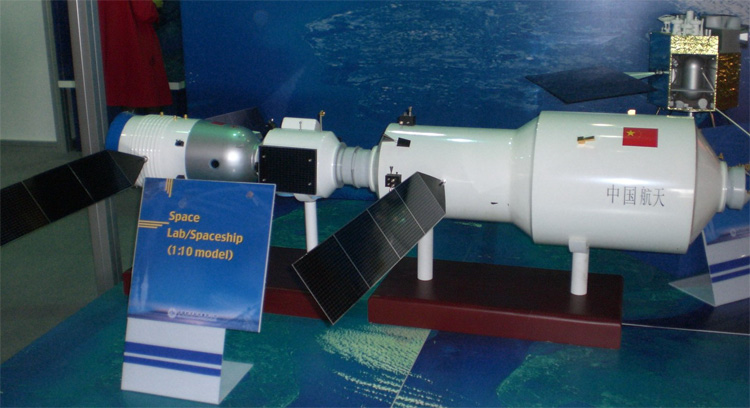
Credit: ??????
China's first unmanned Moon landing
In addition to its next generation space station, China also has plans to explore the Moon. Chang'e 3 is named after the Chinese Goddess of the Moon and includes both a lander and rover. It is the third and most advanced in a series of probes, two previous orbiters having launched in 2007 and 2010. Arriving in the second half of 2013,*Chang'e 3 becomes the first craft to make a soft landing on the Moon since Russia's Luna 24 mission in 1976. Furthermore, the lander is equipped with the first ever telescope to be deployed on another world.
The rover is designed to explore an area of 3 square kilometres during its 3-month mission, with a maximum travelling distance of 10 km (6.2 mi). It can transmit video in real time, while digging and performing analysis of soil samples. It can navigate inclines and has automatic sensors to prevent it from colliding with other objects. Among its other instruments is a radar on its underside, allowing for the first direct measurement of the structure and depth of the lunar soil down to a depth of 30m (98 ft), and investigation of the lunar crust structure down to several hundred metres' depth.
The landing site is determined by topographic data from the previous Chang'e 1 and 2 orbiters. It touches down on the Sinus Iridum at a latitude of 44° north. China returns to the Moon in 2017 with a sample return mission, followed by manned expeditions in the 2020s.
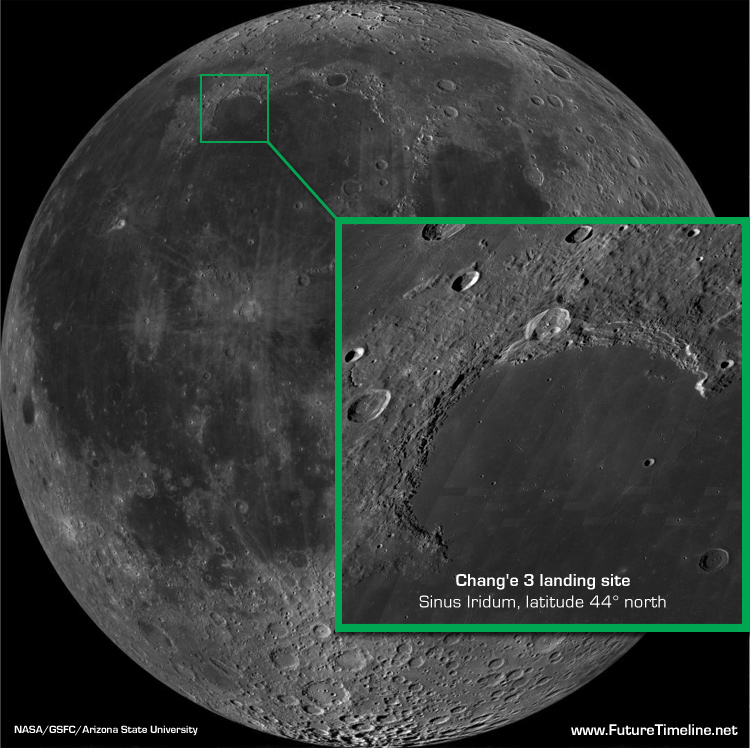
The first test launch of the Falcon Heavy
The Falcon Heavy – the most powerful rocket since the Saturn V – has its first demonstration flight this year. Designed to lift satellites or spacecraft into orbit weighing more than 53 tons, or 117,000 pounds, it has over twice the capacity of the Space Shuttle and Delta IV Heavy launcher. At full power, its thrust is equivalent to fifteen 747's.
The rocket is being developed by SpaceX (Space Exploration Technologies Corporation), one of two private companies that NASA has contracted to transport cargo to the International Space Station.
SpaceX's goals include simultaneously lowering the price of orbital spaceflight and improving reliability, both by a factor of ten, whilst creating the first fully reusable orbital launch vehicle. Longer term, the company intends to design an even more powerful rocket, known as a "super heavy-lift" vehicle. This would have about three times the power of a Falcon Heavy, or about 50 percent more than the Saturn V – enough to carry people to Mars.*
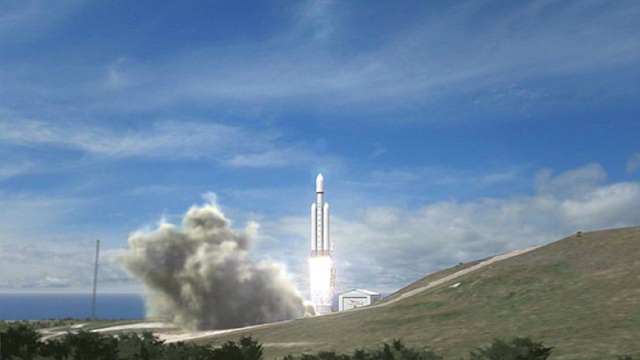
Credit: SpaceX
Reference: http://www.futuretimeline.net/21stcentury/2013.htm
J.W. PRODUCTION